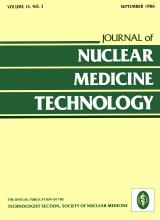Abstract
Osteoid osteoma is a benign bone tumor which is most often seen in young males. Several imaging techniques have been used for the detection of osteoid osteoma lesions. Conventional x-ray was found to detect only two-thirds of lesions. Computerized tomography has been used to determine the extent of the osteoid osteoma’s progress, particularly the soft tissue involvement. In this study, the radionuclide three-phase bone scan was positive in all six patients with surgically proven osteoid osteoma. In addition, nuclear medicine scans of bone specimens may be used to predict whether all of the tumor has been removed. Incomplete excision will likely result in recurrence. Since 99mTc-MDP (methylene diphosphonate) is blood borne, it reflects blood flow to the tumor site. It also adsorbs onto the hydroxyapatite crystal. Its concentration is proportional to osteoblastic activity. A study was undertaken to evaluate the use of the three-phase bone scan in patient’s referred with possible osteoid osteoma. In addition, scans of bone samples were used during the surgical procedures to evaluate complete tumor renewal.







